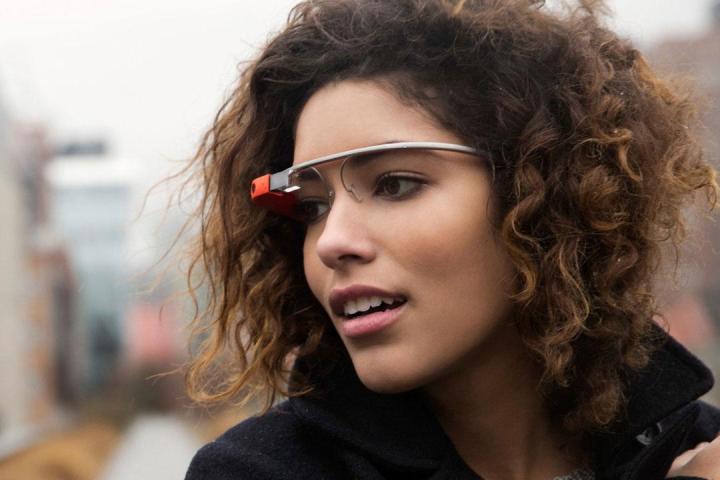
At the Augmented World Expo (AWE) in Santa Clara, VR and AR companies showed off their latest and greatest products. Despite the numerous gadgets, and the huge growth we’ve seen from AWE since last year, our major takeaway is unfortunately a little pessimistic. It looks like AR isn’t going to hit mainstream audiences for quite some time. But there are plenty of groundbreaking AR and VR technologies that keep the field exciting, many of which made appearances at the show. Let’s take a look.
Kopin’s tiny new VR headset
The point of mixed reality is enhancing what we already have — and that’s not going to happen until display technology is good enough to blend into the real world. That’s to say, ultimately, if your futuristic smart glasses project an image of a chair in front of you, you shouldn’t be able to tell the difference between that chair and one in the real world.

Now, better display technology for AR is more than just a higher resolution — though a higher resolution certainly plays a role. Kopin, a display technology company founded in 1999, is pushing the boundaries in improving the resolution of head-mounted displays, and showed off its latest innovations in its Elf VR headset, which features two 2,048 x 2,048-resolution panels operating at a refresh rate of 120Hz.
That provides visual fidelity well beyond current headsets, but what’s most remarkable is how small the headset is — much smaller than the Oculus Rift or HTC Vive. And while it’s only a reference design for customers who may want to buy Kopin’s display technology, the design offers hope that better-resolution displays are on the way, and could soon be implemented into next-generation headsets.
Massless’ stylus for virtual reality
Massless also debuted its first product at the show — a stylus that connects to a headset and allows the user to draw in 3D space. The goal of the device, which is called the Massless Pen, is ultra-precision — so much so that the company refuses to implement buttons on the pen because of the fact that pressing buttons causes the tip of the pen to move slightly.

“I don’t believe in having buttons on the Pen,” said Massless founder Jack Cohen in an interview with Digital Trends. “We are designing this for precision.”
The Massless Pen can be pre-ordered from the Massless website.
Zappar is democratizing AR
While AR technology is slowly but surely improving, it’s largely still irrelevant to the average consumer. One company, however is hoping to change that by doing for AR what Google Cardboard did for VR. The company is Zappar, and it actually launched on Kickstarter at the end of last year, raking in a hefty $84,356 — far more than its $30,000 funding goal.
ZapBox is an affordable yet effective way to experience AR. The package comes in at $30, and includes a cardboard headset with a slot for your phone’s camera, as well as an attachable lens adapter that basically increases the field-of-view of the camera, which is an important thing to note. It also comes with two controllers built from Cardboard, which the software can recognize as long as the controllers are in the view of the camera.

Obviously you’re not going to get the Microsoft HoloLens in a $30 package, but as we noted in our test of the product last year, it has potential. It will certainly be interesting to see if it can help bring AR into the mainstream. The company is even offering tools to help developers build AR experiences.
“Zapworks has been available for a couple of years now, and that’s the toolset that we’re using in-house to build all of the experiences that we’re demoing,” said Simon Taylor from Zappar in an interview with Digital Trends. “And that allows third-parties to do exactly the same thing. The main reason we built out own platform is because we wanted a single app to be able to explore content from everyone.”
3DiVi is bringing Microsoft Kinect to VR
The Microsoft Kinect was an excellent way to interact with the Xbox, but the applications actually range far wider than just that gaming console. One company is taking the idea of the Kinect, and bringing it to the AR and VR space. That company is 3DiVi, and it has a built-in camera designed for motion tracking, called the VicoVR.

The camera is built largely for VR, and it can offer tracking on par with the HTC Vive, but at around half the price. While 3DiVi has built a range of games and apps for it, the company is also working with developers, and even building systems for medical use.
“We have our own games, but we do have an SDK available. It’s open-source, so if someone is interested in developing they can do that,” said Goretti Campbell, a spokesperson for 3DiVi, in an interview with Digital Trends. “Something else that we’ve done is that we’ve partnered with Everment and we’re doing things with them in the medical field.”
You can buy the VicoVR camera from the VicoVR website, and it comes at $399 for the “Game Edition,” or $499 for the “Maker Edition.”
Conclusions
Augmented reality is a long way off from being consumer-ready, but it’s clear that there’s a lot of work going on behind the scenes. Augmented World Expo is bigger every year — and in five years time it could be a totally different show. Until then, well, we’ll just have to settle for these cool-yet-niche advancements.


